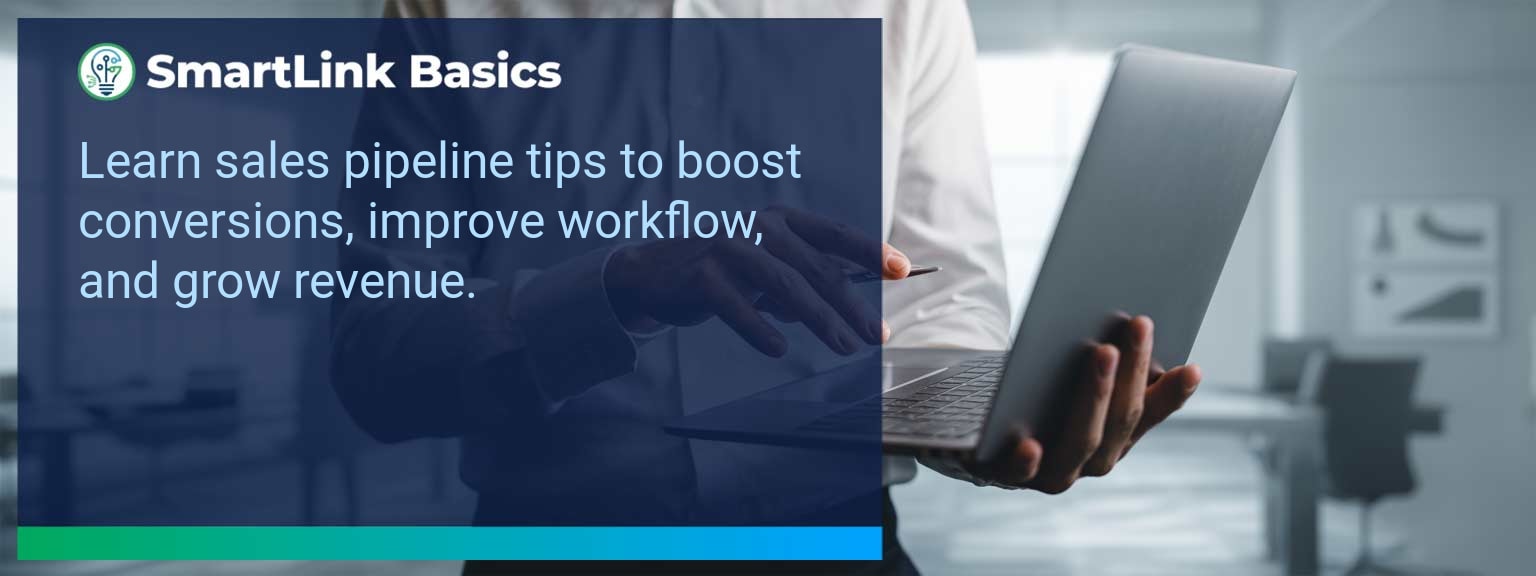High-performing sales teams treat their pipeline as a precision instrument, not a rough forecast. Research from CSO Insights shows that companies with a formally defined sales pipeline management approach enjoy 28% higher revenue growth than those without. At SmartLink Basics, we see that optimizing the flow from lead entry to close is no longer optional—it’s a revenue necessity. This article distills proven strategies for structuring, monitoring, and improving pipelines to reduce leakage, convert faster, and forecast with confidence. You will leave with a clear framework to identify blockages, implement targeted improvements, and sustain efficiency for measurable revenue gains.
- Define clear pipeline stages aligned to your customer journey.
- Track leading, lagging, and quality metrics to inform action.
- Automate repetitive tasks to increase selling time.
- Conduct regular pipeline reviews to address bottlenecks promptly.
- Leverage CRM and AI tools for predictive sales forecasting.
Identifying Bottlenecks And Missed Opportunities
Even seasoned sales leaders encounter pipeline stalls. Deals get stuck in review, proposals linger unanswered, and leads grow cold without follow-up. These choke points impact conversion rate optimization and distort forecasting models. Accurate diagnosis requires both macro analysis of conversion ratios between stages and micro-level inspection of individual deal histories.
One enterprise client discovered that 44% of stalled deals were awaiting technical validation—an avoidable backlog resolved by reallocating solution engineers. This adjustment reduced average sales cycle length by 19 days and freed pipeline capacity for higher-value opportunities.
Actionable Insight: Schedule bi-weekly cross-functional reviews to identify friction points across marketing, sales, and support teams. Examine both deal velocity and stage aging metrics to prioritize corrective action.
Implementing Effective Sales Pipeline Management Strategies
Effective pipeline optimization begins with disciplined lead management strategies and a structured revenue operating system. Clearly defined Ideal Customer Profiles (ICPs) and segmentation inform targeting and reduce wasted effort. Pipeline architecture should match each step in the sales process to corresponding buyer actions, enabling precise qualification.
Plays and messaging frameworks ensure consistent follow-up and objection handling. A defined operating cadence—daily standups, weekly deal strategy sessions, and monthly forecast reviews—keeps pipeline health visible to all stakeholders. Leveraging CRM tools with automation capabilities allows focus on high-impact selling rather than administrative tasks.
Actionable Insight: Map each segment’s buyer journey, define qualification criteria per stage, and embed these into CRM automation rules to maintain data discipline and improve conversion rates.
Achieving Measurable Growth And Efficiency
The value of matured sales process improvement efforts is evidenced in measurable outcomes: shorter sales cycles, higher win rates, and more consistent attainment. Tracking the right combination of leading, lagging, and quality metrics provides both early warning and post-performance assessment.
An example is a SaaS provider that increased forecast accuracy from 72% to 93% by integrating pipeline stage probabilities with historical conversion data in its CRM dashboard. This not only improved executive decision-making but also aligned resource allocation more effectively.
Actionable Insight: Establish baseline KPIs for your sales funnel optimization efforts, then refine them quarterly to adapt to market shifts and buyer behavior trends.
Leveraging Innovation For Continuous Sales Success
Emerging technologies now augment human sales capability. Predictive analytics can model buying intent, while AI-driven chatbots accelerate lead qualification. Integrating such tools into your pipeline workflow increases both velocity and precision.
However, technology alone does not ensure improvement. Leadership must cultivate a culture of data literacy so that all reps can interpret and act on pipeline insights. This underpins sustainable revenue growth and market competitiveness.
Actionable Insight: Pilot an AI-enabled forecasting module within one product line, measure impact on forecast accuracy, then scale based on proven value.
Metrics That Matter
| Category | Metric | Definition | Target |
|---|---|---|---|
| Leading | Stage-to-Stage Conversion Rate | % of deals progressing from one pipeline stage to the next | 80%+ |
| Leading | Average Stage Aging | Average days a deal remains in a single stage | ≤14 days |
| Lagging | Closed-Won Revenue | Total revenue from deals marked as closed-won | 110% of quota |
| Lagging | Forecast Accuracy | Difference between predicted and actual revenue | ±5% |
| Quality | Data Completeness | % of required fields completed in CRM for active deals | 100% |
| Quality | Buyer Engagement Score | Composite score of buyer responses, meeting attendance, and content interaction | 8+/10 |
Get the 90-day plan, coaching rubric, and dashboard template to operationalize AI in your enablement program.
Build a Strong Pipeline to Secure Revenue Predictability
Strong sales pipeline management enables consistent conversions, accurate forecasting, and scalable growth. By diagnosing bottlenecks, implementing structured workflows, and embracing targeted technology, sales leaders gain both control and momentum. The next step is advancing your leadership playbook with proven systems and metrics that work in any market shift. Get more Sales Leadership insights from SmartLink Basics to implement these strategies effectively in your own organization.









